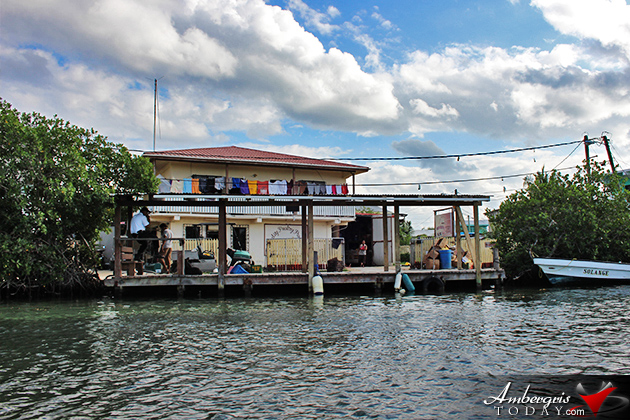Bob and Helen McClain moved to San Pedro, Ambergris Caye, Belize and finished constructing their house in 1993. They live about 15 minutes north of the bridge but after years of enjoying their beachfront property they noticed that the beach had been slowing eroding. After much research Bob and his wife realized that during construction of their island home they did one crucial mistake without even knowing it, and that was the removal of the mangrove growth on their property and along the shore.
Today the McClains have been battling with the elements, trying to counter the effects of erosion. Their attempts at repopulating the area with new mangrove plants have been futile and frustrating. Today an unattractive seawall, made up of limestone rocks, creates a barrier on the shoreline and keeps their beach from wasting away. But Bob and Helen might have just found the solution they have been hunting for years.

Bob and Helen McClain put up a beach sign to highlight their Mangrove Reforestation Project
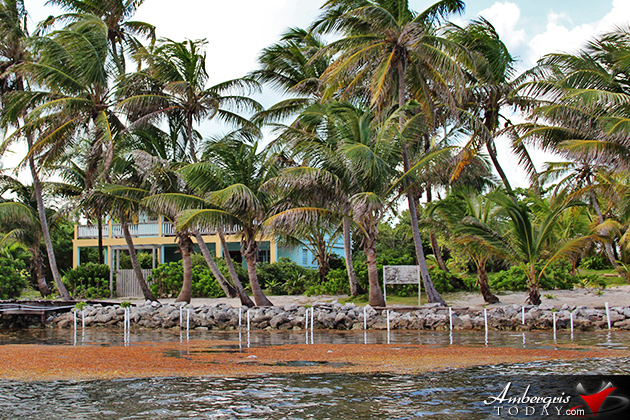

Mangrove seedlings encased in plastic tubing (Riley Encasement Method)
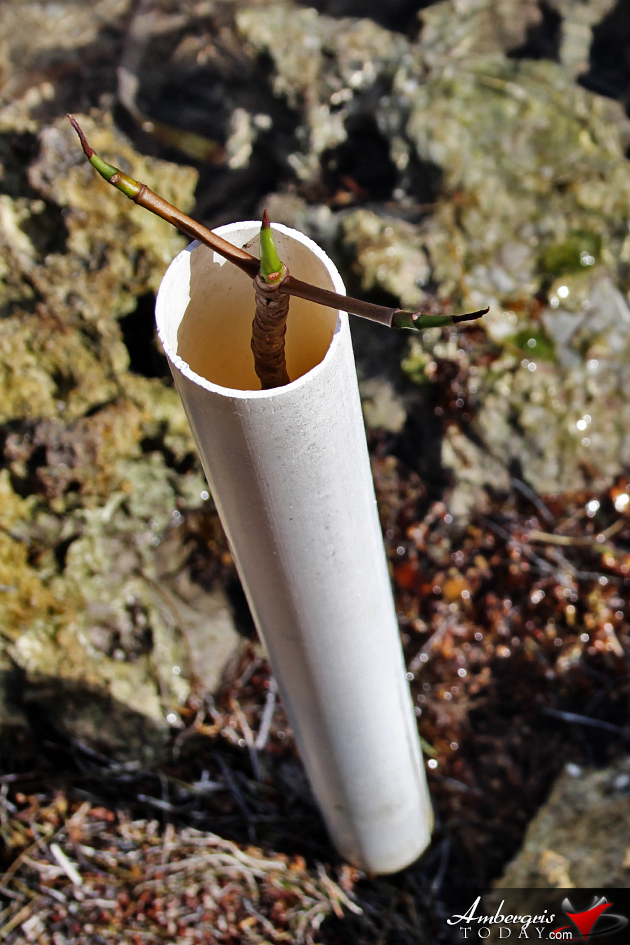
The McClains took part in the Mangrove Reforestation Initiative that kicked off four years ago in Ambergris Caye. Their property was one of three areas chosen in the pilot program to plant Red Mangrove using the new and effective Riley Encasement Method (Click Here to Read More on That). Valentine Rosado of Coral Reef Alliance and other volunteers, including Hol Chan Marine Reserve staff and island students, took the initiative to try the new method of mangrove reforestation.
To make a long story short, the McClain’s site was the only one where the mangrove seedlings successfully grew to maturity, but it took four long years to happen. Much like the coral reef, mangrove forests are very delicate, yet an essential habitat and part of a healthy environment for the island. Mangroves act as natural seawalls that prevent erosion, but developers are quick to remove them, it’s until much later that residents have to deal with the ugly situation of erosion and unsightly seawalls.
Bob McClain realized how low the success rate of growing mangroves was; just planting the seedlings or even transplanting a grown plant are very unsuccessful most of the time. Valentine Rosado explained that there are many factors and natural elements that make it difficult for the mangrove to grow successfully, especially on the front coast line.
Because the McClain’s residence is in a quieter area the mangroves had the opportunity to grow, unlike the other two locations where, unfortunately humans had fault in destroying the growing seedlings before they could reach maturity.
“We are very happy to see that several mangroves are coming out of their encasings and are showing positive growth, commented Mr. McClain. “We just hope that they reach maturity. Hopefully the mangroves will soon provide habitats for the area’s marine life.”
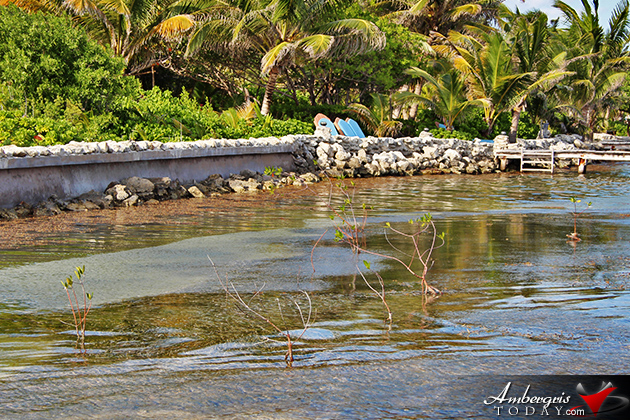
Mangroves transplanted in areas where seawalls have been built struggle to grow
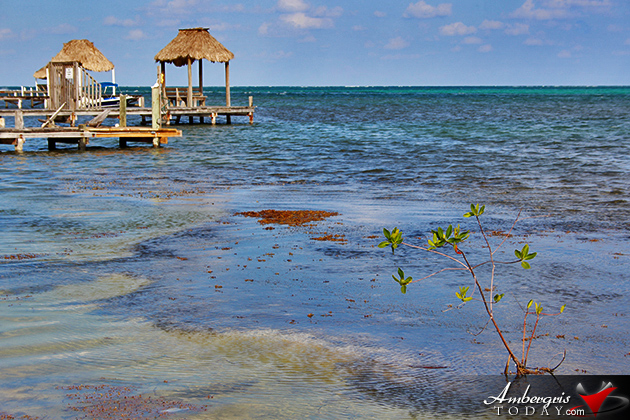
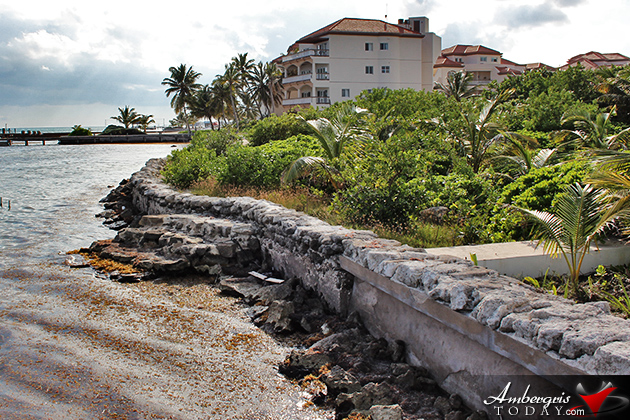
Unsightly seawalls built along the shore of Ambergris Caye to prevent erosion, after mangroves were removed
Valentine stressed that mangrove trees along the beach are essential in preventing erosion; without them it is clear to see the rapid rate of beach erosion that takes place. He hopes to educate island residents in the importance of integrating mangroves as part of the coast line and even as part of the development of the island.
“We can try many times to reforest areas, but without public support, it will not be successful,” said Valentine.
Educating residents is key and the Riley Encasement Method has proven to be successful as with the positive results at the McClain’s residence. Valentine hopes that residents realize the importance of mangrove health and follow the example of Bob and Helen in the reforestation of mangroves in their own homes and neighborhoods. To learn more about the mangrove reforestation efforts, contact Valentine Rosado at 602-2100.
**The method encompasses the propagules being encased in a PVC pipe and then securely planted into the area chosen to be reforested. The original areas where the mangroves were planted included a beach property in South Ambergris Caye, along the Boca del Rio beach and in a beach property on Northern Ambergris Caye.
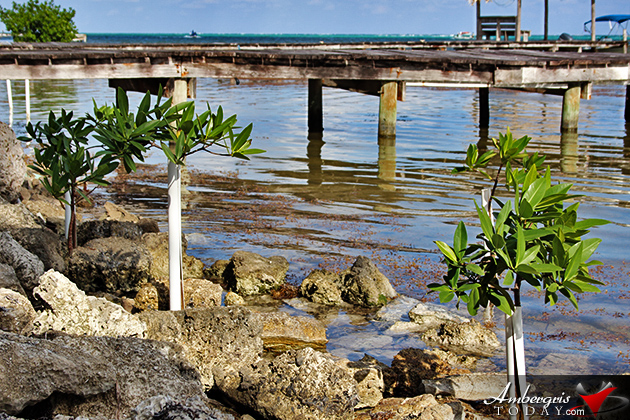
Mangrove plants grow out of encasement and are strong enough to grow into larger trees
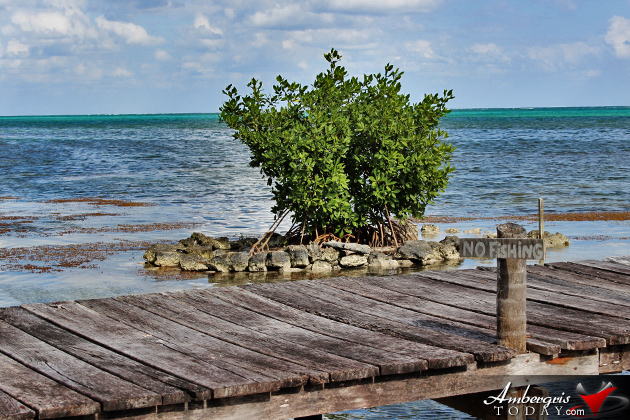
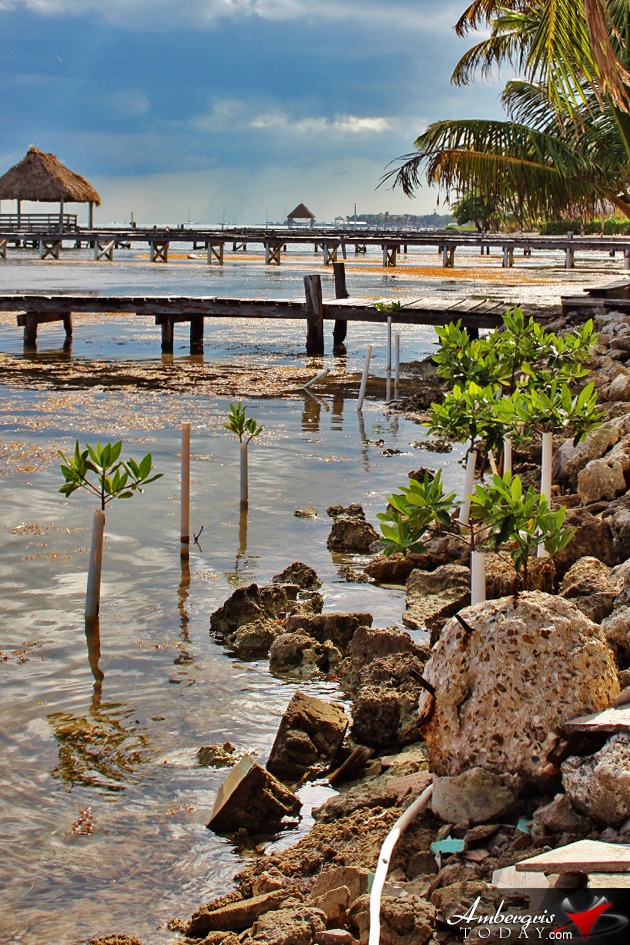

Mangroves are cut along the shoreline to contruct piers and seawalls

